|
|
XJ40 and X300 Buyers Guide
|
|
|
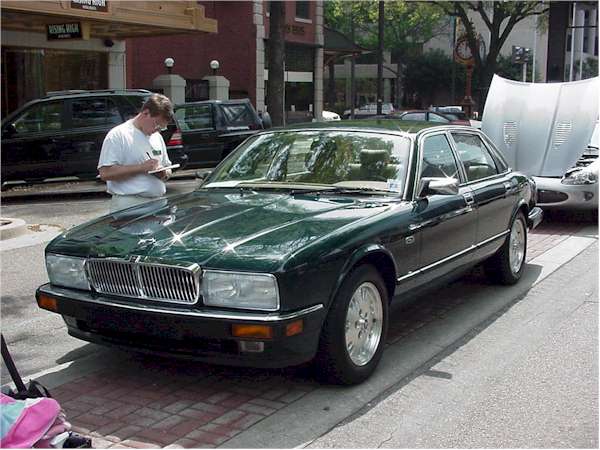
Related
Pages :
|
Even though
this section only covers the XJ40, we have included some information
on the later X300 and X308 as some prospective buyers may want to
compare the various versions. For more detailed information on the
later XJ, please visit the X300/X308
section.
Speaking of
warranty, in the US, if you are looking for a late model Jaguar
you should consider a Select Edition model thru a Jaguar Dealer
as these cars receive a 6 years / 100k miles warranty following
a strict inspection. Prices can be a little higher than a car bought
from a private party but the additional warranty and peace of mind
is certainly worth the extra cost. As a factory warranty it is far
superior with third party warranty contracts.
This explains
not only what you should look for, but also what you should pay
for a Jaguar XJ40 or X300. Hopefully this will prevent you
from making the same mistakes as others have....
This page
is dedicated to model year changes, potential problems and prices.
Please see the other pages for info on (click on arrows)
Prices
( updated 11/01 ) are averages for cars with usual wear and mileage
for each year, assuming no major problems. Prices will vary depending
on location and other factors.
For the UK,
the prices listed here come from Classic
Jaguar World price guides available right here on Jag-Lovers
with all the details and variations; UK prices are listed for the
4.0 models, 3.2 versions are cheaper.
The following
guide was originally written by former webmaster Bill Weisman and
was updated late 2001.
|
Which
model to buy ?
1987-1989
1990-1992 1993-1994 1995-1997
1998 +
|
HAVE
ANY CAR YOU CONSIDER BLOWING YOUR WAD OF CASH ON CHECKED BY A JAGUAR
MECHANIC THAT IS FAMILIAR WITH THE MODEL YOU ARE CONSIDERING! AND
IT MUST HAVE SERVICE RECORDS! DO NOT TAKE IT TO SOMEONE WHO IS NOT
EXTREMELY FAMILIAR WITH XJ40 or X300 VEHICLES!
So..
uhh... now you realize that that's pretty important, eh?
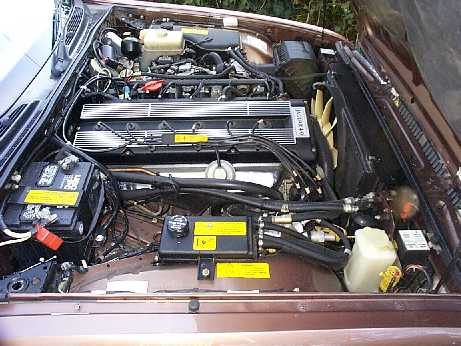 Well,
clearly the model that you choose depends upon your budget, and
this page does certainly have a North American slant to it (I have
no idea whatsoever what a Daimler sells for in Australia..etc..)
but this is important for everyone! Well,
clearly the model that you choose depends upon your budget, and
this page does certainly have a North American slant to it (I have
no idea whatsoever what a Daimler sells for in Australia..etc..)
but this is important for everyone!
Now,
It's also important to mention what you ought to pretty much ignore
right off of the bat:
1) Early
cars unless it is properly maintained and you take any flaw into
account when making an offer especially for something like the Self
Levelling Suspension ( see the 88/89 section below). Early XJ40s
( 88 and 89 ) do not have a good reputation but once sorted out
can be nice reliable cars.
2) Don't
buy the smaller engined cars. The 2.9L in particular is a real dog.
This engine is very very prone to timing chain failure, and is very
underpowered. While it cost less new, the car in actuality uses
about as much fuel as the more powerful and durable 3.6L. Also avoid
the 3.2, the mileage factor vs the 4.0L is a lot like the 2.9, but
it's also a lot slower than the 4.0, might as well just got for
the bigger engine, I mean, if you're that worried about mileage,
why are you looking at a 4,000lb Luxury Car? The 3.2 is a well-engineered
motor though. I just think that if you want a Jag, go for one with
some "oomph"!
3) No
Service History? No Sale.
4) Seller
won't let you take it to a mechanic? He or She is probably hiding
something. Dont bite.
5) Obvious
problems? Don't buy one of these cars and think you can "fix
it up". It ain't gonna happen. I mean, if you find expensive
problems right off of the bat... Hell with it, it's also probably
got a lot of things wrong with it that you CANT see. It will never
pay to buy a dog and try fixing it. Unless you get like, a 1992
Sovereign with a bad head gasket, diff and rear suspension for like
$ 4,000.
6) Rust.
This apply to any car and especially any Jaguars. Older XJs and
others as well, used to be prone to rust something Jaguar didn't
really solve until the 90s. Rust can be compared to an iceberg...
( remember Titanic ? ), only part of the problem can be seen, the
rest is hidden below surface. Rust is expensive to properly repair
and if not treated will keep growing...
Now,
let's see what we DO want to buy!!! The pricing information
provided on this page is an average for a car in a condition / mileage
representative of its age and with no major mechanical problems.
Prices will vary greatly according to location, service history,
etc...
|

1989
interior, note the automatic seat belts. these are covered
by a
lifetime waranty in the US. Overall the interior
was little changed all
the way until the 98
XJ8s. (picture Al LeGault)
|
These
early cars are not as bad as they are often described especailly
when they've been maintained properly in which case they car actually
be a pretty good buy. Problems do occur because the relatively low
value tends to prompt some owners not to fix things the right way
or even do teh required maintenance. If that's the case, things
will go downhill pretty fast...
Beyond the
basic items and general things you'd check on any pre owned car,
especially one over 10 or 12 years old, the Self Levelling Suspension
is the major item to check. Many cars have now been converted to
a standard shock and spring setup, something even Jaguar has recommended.
If that's the case, this solves a major source of headaches. If
the car still have the original SLS system in place, and even if
it appears to be working and shows no obvious leaks, be prepared
for an eventual failure which could come withing a few days... or
years. The good news is that the conversion kit is readily
available for under $ 500; official Jaguar install time is 2hrs
for a trained mechanic and probably 5 to 6hrs in your own garage.
See the XJ40
repair book for details. Note that some early
XJ6 came with shocks and springs so no conversion are needed there.
Another important
thing to check or at least be aware of is the annoying failure of
outside door handles, usually results of poor lubrication but also
of a design flaw. Not a big problem, again this is covered in the
XJ40
repair book.
A/C and climate
control can be one tough trouble spot on all the cars but
more so on the early ones because of age... broken flaps, rotting
foam, etc. It can be a pain to fix, but not expensive if you do
the work yourself.
Early cars had what's often called
a digital dash, which in fact is very close to the later dash except
for digital bar readout of the engine instruments and an additional
digital readout of the speed.
Of course regular
mechanical checks must be done and it really pays to have a Jagaur
specialist inspect the car. Rust is a big factor as it is often
expensive to repair properly. On the bright side, the engine
and transmission are nearly bullet proof unless showing signs of
abuse, overheating, etc... The only weak spot of the AJ6 engine
would be head gaskets failures which when caught early on are fairly
easy to fix.
| Model |
US ( US $
) |
| 87-88 XJ6 |
1600 - 2100 |
| 87-88 VDP |
1900 - 2600 |
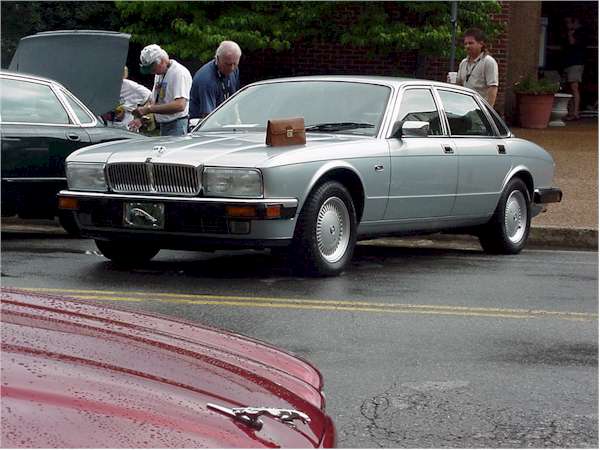
Starting in 1990, the XJ40 series of cars was seriously overhauled.
The 3.6L Engine was dropped in favor of the 4.0L engine. This gave
the car not only a boost in HP to 223, but a massive boost in torque.
The cars also gained a "switchable" automatic transmission
with a "sport mode" switch enabling a higher-performance
shift pattern. This is conveinient option for your teen-age son
when he borrows your car (If you let a 16 yr old borrow your Jag,
what do you expect?) Also, the cars found a heavily updated electrical
system, lock and doorhandle system and gauges as some of the more
noticeable improvments.
The XJ6 continued,
but without the self-levelling suspension, inlaid wood, full chrome
window surrounds and sunroof to name a couple of items. The 89 XJ6's
equipment level was replaced by the Sovereign. The Sovereign, Vanden
Plas and Vanden Plas Majestic all had the 1-piece headlights, which
were new for the US this year. The model lineup continued without
major, noticeable changes, into 1991. The Majestic took a break
for 1991, to return for 1992.
The 1991 and 1992 Jaguars continued
to improve on quality and reliability as Ford's commitment to Jag
started to really show. It should be noted that the 1990 and 1991
carswere already "done" by the time of the purchase by
Ford and are still excellent cars.
| Model |
US
( US $ ) |
|
XJ6 |
2800
(90) - 4000 (92) |
| 90
- 91 VDP / Sovereign (UK) |
3500
(90) - 5500 (92) |
| 90
VDP Majestic |
4000
(90) - 6000 (92) |
The best XJ40s are the newest XJ40s,
the 1994s and the 1993s. The main advantage with the 94s and 93s
is that they have airbags. The only real difference in the 1994
models is the addition of a passenger airbag and the switch to 16"
wheels. The model lineup was also changed for the last two years
of the XJ40's life : In the US the Sovereign and Vanden Plas Majestic
were dropped. The XJ6 was given the one-piece headlights and was
left alone with the Vanden Plas.
| Model |
US
( US $ ) |
|
XJ6 |
5000
- 7000 |
| VDP
/ Sovereign (UK) |
6000
- 7500 |
|
XJ12 |
6000
- 7500 |
|
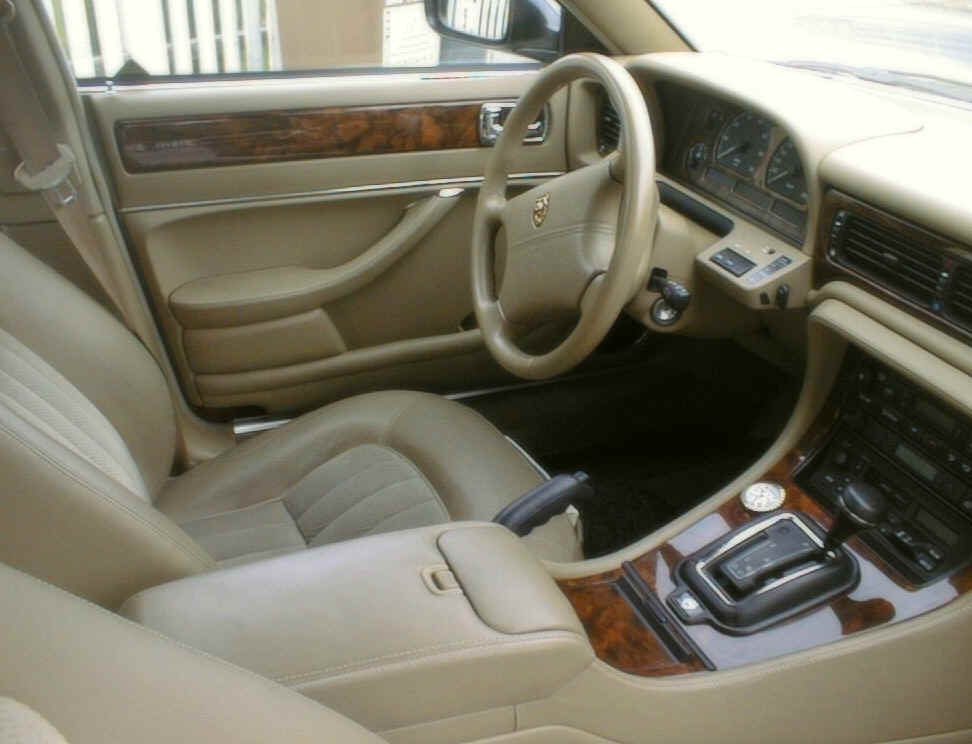
X300 interior, unchanged
from the XJ40
( picture Christian Steinmann)
|
In 1995 Jaguar totally revamped
the XJ40 and now called it the X300. Well, actually, they called
them XJ6s and Sovereigns and Daimlers, but inside the factory they
called em X300s. These cars have totally proven themselves to be
extremely reliable vehicles. The X300 shares the basic structure
and interior with the XJ40, but the body was redesigned and a long-wheelbase
model was introduced as well. 1995 was also the first year
for the supercharged high performance XJR and 1996 for the
longer wheelbase XJ6.
The extensive redesign that took
place in the X300 explains why they are much more reliable
compared to the previous XJ6s; Jaguar had finally reached a level
of reliability similar to its competition. For these cars, most
problems reported on the Modern discussion list are minor and about
some of the accessories such as leaky rearview mirror, memory problems
in the power seats, and problems with the tilt steering wheel motor.
Under the bonnet, the only thing
which seem to come back on in a while are sticky throttle due to
carbon buildup along with a few cracked exahust manifolds. Major
engine or transmission problems are extremely rare if any.
For a list of common problems with
the 95 - 97 X300, see the X 300
On line Book or click here for the common problem page
US
prices range :
| Model |
US
( US $ ) |
| XJ6 |
7000
(95) - 14000 (97) |
| VDP
/ Sovereign (UK) |
9000
(95) - 17000 (97) |
| XJR |
10000
(95) - 19000 (97 |
| XJ12 |
10000
(95) - 16000 (96) |
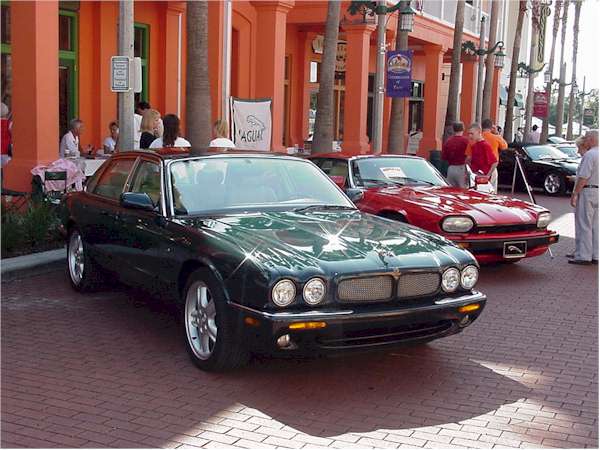
For the 1998 model year the XJ6 was no more, because Jaguar stopped
making 6-cylinder engines in favor of an all new aluminum V8 which
in its most common 4.0L form develops 290hp. Jaguar had first launched
the V8 in the XK8 in 1997 so the engine was in it's second year
when launched in the XJ8 and is very reliable and troublefree.
The new V8 sedans have minor bumper
and lighting changes as well as new seats and a new dashboard with
the recessed round gauges. These cars now get better mileage, have
a ton more power, especially the new supercharged 370hp XJR (picture
left).
Late model cars ( 4 years old or
less ) can be purchased in the US from Jaguar dealers with the 6
year / 100k Select Edition warranty.
Prices for 98 models start around
$ 17000 for an XJ8, $ 20000 for a VDP and about $ 25000 for an XJR
(as of late 2002)
The
XJ8 seem to have very little significant problems as early models
reach high mileage although two issues can potentially be very costly.
Until
2000, earlier version of Jaguar's AJ26 V8 engine used Nikasil cylinder
liners and a number of engines had to be replaced because of high
wear of the plating resulting in loss of compression and high blow
by. High sulfur content in gas and infrequent oil changes contributed
to this problem making it in some cases a regional isssue. Replacement
engines use the same steel liners Jaguar uses in 2000 and up engines
but replacement is obviously costly although statistically very
few cars seem to be affected. A blowby test or compression check
may be a good precaution when buying an early car. Note that Jaguar
ins't the only manufacturer to have experienced problems with Nikasil,
BMW did too. More on this can be found in an article published in
the May 2004 issue of Classic Jaguar World Magazine which we were
allowed to reproduce here on Jag-Lovers (click
here for article)
The second
issue concerns the timing chain tensioners which have occasionaly
failed resulting in terminal engine damage... In nearly all cases,
an engine rattle after a cold start serve as a warning sign what
the tensioners are worn and need to be replaced. More on this can
be found in an article published in the May 2004 issue of Classic
Jaguar World Magazine which we were allowed to reproduce here on
Jag-Lovers (click
here for article)
|

